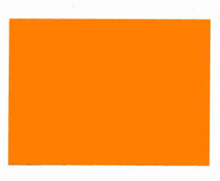Contact
November 22, 2021
Facts
In 2007, following a protracted battle with the EUIPO which started in 1998, SA Veuve Cliquot Ponsardin (the trading name of MHCS, the applicant in this case) was finally successful in registering as an EU trade mark the mark below, in respect of “champagne wines”.
The mark was referred to as a “figurative mark” on the application form. During the course of the proceedings before EUIPO the Second Board of Appeal said that the application form should be treated as seeking protection for a colour mark, even though the figurative mark box had been ticked.

On the application form, the “colour claimed” was “the colour orange for which the scientific definition is as follows: trichromatic co-ordinates/colour characteristics: x 0.520, y 0.428 – diffuse reflectance 42.3% – dominant wavelength 586.5 mm – excitation purity 0.860 – colorimetric purity: 0.894”.
In November 2015, Lidl Stiftung & Co KG applied for a declaration of invalidity of the mark on the basis of articles 7(1)(a) and (b) of the Trade Mark Regulation (207/2009/EU). Lidl said that the mark lacked distinctive character and that specifying the colour shade using a scientific definition was not sufficient under Article 4 of the Trade Mark Regulation (40/94/EC).
The Cancellation Division of EUIPO dismissed the application, treating the mark as a colour mark, and Lidl appealed. The First Board of Appeal (FBoA) annulled the Cancellation Division’s decision. The FBoA said that the Cancellation Division should reconsider its decision as: (i) on the application form for the mark the “figurative mark” box had been ticked; (ii) Veuve Cliquot had consistently referred to the mark as a “figurative mark in colour”; (iii) Veuve Cliquot had never requested that the application be amended; and the mark had been registered as a “figurative mark”. The FBoA said that colour marks were devoid of any shape, whereas figurative marks had a clearly defined contour, which had an effect on the distinctive character of the trade mark in question. The choice of the nature of the mark was therefore a matter for the applicant, and choosing one classification rather than another could not be regarded as a manifest error here.
Veuve Cliquot appealed to the General Court, arguing that the FBoA had gone beyond the scope of the factual observations made by the parties, thereby infringing Article 95(1) of the Trade Mark Regulation (2017/1001/EU), and had infringed Article 94 of the 2017 Regulation on the rights of defence by not hearing the parties on the issue of whether the mark was a figurative or a colour mark.
Decision
In terms of the nature of the mark, i.e., figurative or colour, the GC found that the parties had not raised the issue, before the FBoA. The FBoA had raised the issue of its own accord.
Further, the issue had already been discussed and decided during the registration procedure. On examination, the examiner had found that it was a figurative mark, but on appeal, the SBoA had said that it was a colour mark. Further, the SBoA had found that the mark had acquired distinctive character through use in respect of “champagne wines”. EUIPO had then failed to correct the registration of the mark as a colour mark, rather than a figurative mark.
While it was true that, according to case law, EUIPO is entitled to consider not only arguments and evidence submitted by the parties, but also well-known facts that it identifies in the course of proceedings, in this case, no evidence or well-known fact had been submitted to or relied on before the FBoA.
Therefore, the GC held that the FBoA had gone beyond the pleas and arguments of the parties and had infringed Article 95(1) of the 2017 Regulation.
Further, the GC said, the FBoA had not questioned the parties on the issue of the nature of the mark, thereby infringing Veuve Cliquot’s right to be heard under Article 94(1) of the 2017 Regulation. The FBoA had found, of its own accord, that the question of whether the mark was a figurative mark or a colour mark was a decisive aspect of the dispute that had to be taken into account in order to determine the scope of protection and whether the mark had distinctive character, but it had done so without hearing the parties on the issue.
Accordingly, the GC upheld Veuve Cliquot’s appeal and annulled the FBoA’s decision. (Case T-274/20 MHCS v EUIPO EU:T:2021:592 (15 September 2021) — to read the judgment in full, click here).
Expertise